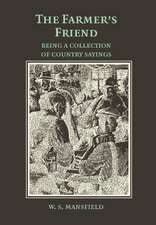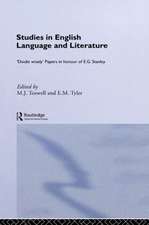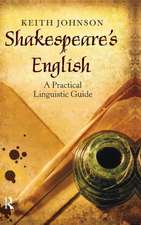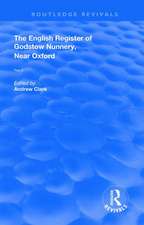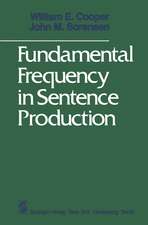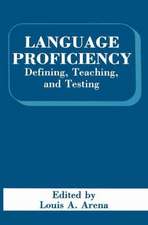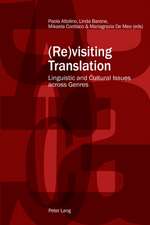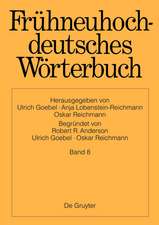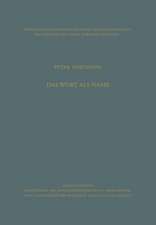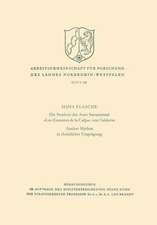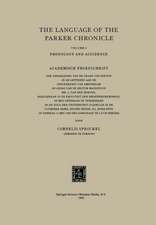The History of Spanish: A Student's Introduction
Autor Diana L. Ranson, Margaret Lubbers Quesadaen Limba Engleză Paperback – 3 oct 2018
Preț: 278.52 lei
Nou
Puncte Express: 418
Preț estimativ în valută:
53.30€ • 55.58$ • 44.30£
53.30€ • 55.58$ • 44.30£
Carte disponibilă
Livrare economică 27 februarie-13 martie
Livrare express 13-19 februarie pentru 50.10 lei
Preluare comenzi: 021 569.72.76
Specificații
ISBN-13: 9781316507940
ISBN-10: 1316507947
Pagini: 452
Ilustrații: 34 b/w illus.
Dimensiuni: 175 x 245 x 22 mm
Greutate: 0.91 kg
Editura: Cambridge University Press
Colecția Cambridge University Press
Locul publicării:Cambridge, United Kingdom
ISBN-10: 1316507947
Pagini: 452
Ilustrații: 34 b/w illus.
Dimensiuni: 175 x 245 x 22 mm
Greutate: 0.91 kg
Editura: Cambridge University Press
Colecția Cambridge University Press
Locul publicării:Cambridge, United Kingdom
Cuprins
List of figures; List of maps; List of tables; Preface for students; Preface for instructors; Acknowledgments; 1. Why do Spanish speakers say el arte but las artes? The value of studying the history of Spanish; 2. Is it wrong to say cantastes instead of cantaste? A linguist's attitude and approach to language; 3. How and why do languages change and how do linguists know?; 4. Did /f/ change to /h/ in Spanish because of Basque? Four moments of language contact in the history of Spanish; 5. Why is Spanish also called Castilian? The standardization process and its effects; 6. How did FESTA become fiesta but FESTÎVUM became festivo? Regular vowel changes; 7. How did ACÛTUM become agudo? Regular consonant changes; 8. Why is 'milk' leche but 'Milky Way' is Via Láctea? Special tonic vowel changes; 9. Why fieldad but lealtad? Special consonant changes; 10. Why do Spanish speakers sometimes say andé instead of anduve? Morphological changes; 11. Why is mano feminine and día masculine? Changes in case, declension, number, and gender; 12. Why do Spanish speakers sometimes say más malo instead of peor? Origins of nominal elements; 13. Why are there so many verb tenses in Spanish? Origins of verbs; 14. Why is comeré the future of comer but sabré is the future of saber? How regular sound change and analogy lead to regular and irregular forms; 15. Do you say veo el gato or veo al gato? Syntactic changes; 16. How did MÛSCŬLUM 'little mouse' become Spanish muslo 'thigh'? Semantic changes; 17. Why perro 'dog' instead of can? Lexical changes; Appendix: Selections from old Spanish texts; El Auto de los Reyes Magos; Cantar de mio Cid; Razon feita d'amor; Milagros de Nuestra Señora; Calila e Dimna; Glossary of terms; Works cited; Word index; Subject index.
Recenzii
'An accessible and illuminating introduction to the fascinating history of the Spanish language over the last two thousand years.' Roger Wright, University of Liverpool
'Takes vast and complex material and presents it in a reader-friendly, manageable, and engaging way, to create a welcome addition to the resources that instructors and students of Spanish historical linguistics have at their disposal.' Natalya I. Stolova, Colgate University, New York
'Exploits students' natural curiosity and explains what are often quite difficult concepts and complex data in a direct, user-friendly way. There is no other teaching resource for the history of the Spanish language quite like this.' Chris Pountain, Queen Mary University of London
'With references throughout to contemporary language and the everyday learning experience (both in Spanish and English) of its target student audience, as well as just the right amount of content, this book seems likely to inspire students of (historical) linguistics for generations to come …' Felix Tacke, Romanische Forschungen
'… students like it. This is perhaps the most significant endorsement of all. If those of us who work in historical linguistics want to convey the value of knowing the language's antecedents and draw in a future generation of scholars to our discipline, Ranson and Lubbers Quesada's book is a great way to start.' Cynthia Kauffeld, Studies in Hispanic and Lusophone Linguistics
'an excellent textbook for an introductory course on the history of the Spanish language. The breadth of topics covered, presented in an engaging, easy-to-read style, and the inclusion of a wide-range of thought-provoking activities make it an invaluable resource for students and instructors alike.' Sonia Kania, La corónica: A Journal of Medieval Hispanic Languages, Literatures, and Cultures
'Takes vast and complex material and presents it in a reader-friendly, manageable, and engaging way, to create a welcome addition to the resources that instructors and students of Spanish historical linguistics have at their disposal.' Natalya I. Stolova, Colgate University, New York
'Exploits students' natural curiosity and explains what are often quite difficult concepts and complex data in a direct, user-friendly way. There is no other teaching resource for the history of the Spanish language quite like this.' Chris Pountain, Queen Mary University of London
'With references throughout to contemporary language and the everyday learning experience (both in Spanish and English) of its target student audience, as well as just the right amount of content, this book seems likely to inspire students of (historical) linguistics for generations to come …' Felix Tacke, Romanische Forschungen
'… students like it. This is perhaps the most significant endorsement of all. If those of us who work in historical linguistics want to convey the value of knowing the language's antecedents and draw in a future generation of scholars to our discipline, Ranson and Lubbers Quesada's book is a great way to start.' Cynthia Kauffeld, Studies in Hispanic and Lusophone Linguistics
'an excellent textbook for an introductory course on the history of the Spanish language. The breadth of topics covered, presented in an engaging, easy-to-read style, and the inclusion of a wide-range of thought-provoking activities make it an invaluable resource for students and instructors alike.' Sonia Kania, La corónica: A Journal of Medieval Hispanic Languages, Literatures, and Cultures
Notă biografică
Descriere
Provides students with an engaging and thorough overview of the history of Spanish and its development from Latin.



